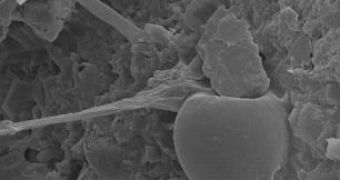Towards the end of this year's January, the news broke that one scientist named Chandra Wickramasinghe was nothing if not convinced that he had succeeded in pinning down traces of fossilized alien life forms in a meteor that had landed in Sri Lanka back in December 2012.
As was to be expected, Professor Chandra Wickramasinghe's claims failed to be taken seriously by the scientific community.
Long story short, numerous other specialists argued that, even if the meteor did contain life forms, these microorganisms only got there when the space rock made landfall.
To put it bluntly, the samples analyzed by Chandra Wickramasinghe must have been contaminated.
Furthermore, some even questioned the assumption that the bits and pieces of rock studied by this researcher did in fact come from a meteorite.
Still, said Professor is not yet willing to give up on his claims, hence his publishing a second scientific paper, which allegedly proves that the microfossils he found when analyzing the meteorite are in fact of an extra-terrestrial origin.
According to Daily Mail, Professor Chandra Wickramasinghe's second study on this controversial issue also encompasses thorough analysis of the chemical make-up of the samples taken into consideration for this research.
As the professor explains, their having a low level of nitrogen is proof enough that no modern organisms ever had the chance to contaminate the rock fragments he came to investigate.
Thus, this second study supposedly brings forth, “clear and convincing evidence that these obviously ancient remains of extinct marine algae found embedded in the Polonnaruwa meteorite are indigenous to the stones and not the result of post-arrival microbial contaminants.”
On the other hand, here is what Phil Plait, the author of Slate's Bad Astronomy blog, had to say about Professor Chandra Wickramasinghe's and his colleagues' paper on this topic:
“I read the paper, and really it’s more of the same as from the first paper. In some ways, it’s even shakier; they provide lots of technical data that gives their work a veneer of credibility, but when you look a bit deeper you find they didn’t do a lot of critically necessary tests to establish the veracity of their claims.”

 14 DAY TRIAL //
14 DAY TRIAL //